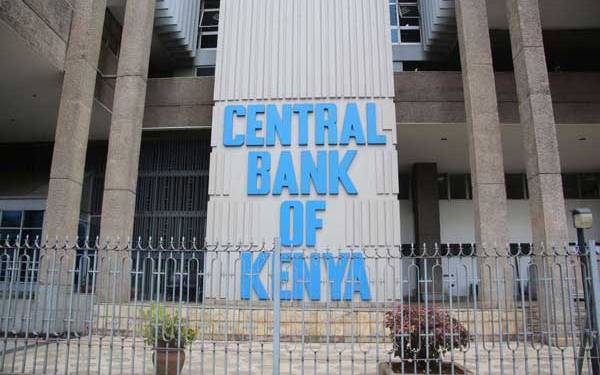Kenya’s Monetary Gamble Tests the Limits of Credibility
Kenya’s CBK cut its benchmark rate to 9.25%, the 8th straight easing, as inflation cools to 4.6% and the shilling (USD/KES: 128.5) steadies. With NSE: NASI up 0.6% and US10Y: ^TNX at 4.35%, markets test whether liquidity trumps currency risk in Africa’s top frontier economy.

The Central Bank of Kenya has reduced its benchmark Central Bank Rate (CBR) by 75 basis points to 9.25 percent, extending an aggressive easing cycle that has now run through eight consecutive policy meetings since mid-2024. The decision marks the sharpest shift toward stimulus since the pandemic era, signaling a calculated push to revive credit and growth amid a fragile global backdrop and steady domestic disinflation.
Governor Kamau Thugge and the Monetary Policy Committee (MPC) justified the move as a response to “continued deceleration in inflation and weak private-sector credit expansion.” Headline inflation eased to 4.6 percent in September, comfortably within the 2.5 to 7.5 percent target band. Yet non-core inflation remains sticky at 9.6 percent, driven by fuel and food prices that have yet to normalize fully. The MPC’s tone reflects a delicate balancing act—acknowledging lower inflation without underestimating structural price pressures that could re-emerge if the shilling weakens further.
The bigger issue is monetary transmission. Private-sector credit growth remains stuck near 8.2 percent year-on-year, well below the 12 to 14 percent rate needed to sustain Kenya’s medium-term growth targets. Banks remain cautious, constrained by nonperforming loans (NPLs) still elevated at 17.1 percent of total portfolios. Despite successive cuts, liquidity has failed to cascade effectively into small businesses and households. Many lenders continue prioritizing government securities over private lending, drawn by yields above 17 percent on the 10-year Treasury (KENYA10Y: GOVKE10Y)—a risk-free return that dwarfs SME credit margins.
The CBK’s easing push comes against a tightening global backdrop. The U.S. 10-year yield (US10Y: ^TNX) holds near 4.35 percent, and the Dollar Index (DXY: DX-Y.NYB) remains above 105.8, underscoring persistent dollar strength. That dynamic has kept emerging-market currencies under pressure, including the Kenyan shilling (USD/KES: KES=), which trades around 128.5 per dollar. By loosening policy while U.S. rates stay high, Nairobi risks widening the yield gap and inviting renewed capital outflows from frontier bond markets.
Even so, macro indicators suggest enough stability for modest stimulus. The current-account deficit narrowed slightly to 4.6 percent of GDP, supported by rising diaspora remittances (≈ USD 4.2 billion, +7 percent YoY) and resilient service exports, particularly ICT and transport. Foreign-exchange reserves, at USD 7.4 billion or 4.7 months of import cover, remain adequate, though still below the pre-pandemic comfort level. The fiscal deficit, projected at 4.7 percent of GDP, has stabilized following new tax measures and tighter spending controls.
Growth prospects depend on whether the new monetary stance can ignite private investment. The Treasury expects GDP to expand 5.3 percent in 2025, led by manufacturing, ICT, and agriculture. To realize that trajectory, credit conditions must loosen further without destabilizing prices. The CBK’s task, therefore, is not simply to stimulate—it is to prove that inflation targeting and currency stability can coexist with accommodative policy in a dollar-strong world.
Regional comparisons highlight Kenya’s divergence. Nigeria (CBN: MPR) holds its policy rate at 18.75 percent, Ghana (GHS: POLICY) at 29 percent, and South Africa (SARB: REPO) at 8.25 percent. While peers remain defensive to protect currencies and contain imported inflation, Kenya’s approach signals confidence that domestic price pressures are under control. This confidence could pay off if credit picks up—but it also risks testing market patience if the shilling softens faster than expected.
Financial markets responded cautiously. The Nairobi Securities Exchange All-Share Index (NSE: NASI) gained 0.6 percent following the announcement, led by banks such as Equity Group (NSE: EQTY) and KCB Group (NSE: KCB) on expectations of lower funding costs. Yields on the Kenya 2032 Eurobond (KE2032: ISIN XS2433952104) slipped to around 9.3 percent, suggesting a mild confidence boost in the country’s debt trajectory. Yet foreign investor flows remain subdued, reflecting broader risk aversion toward frontier markets as the U.S. government shutdown and global liquidity constraints weigh on sentiment.
Beneath the relief rally lies skepticism. The monetary-fiscal linkage remains thin, with fiscal space constrained and banks reluctant to channel liquidity toward productive credit. Every additional rate cut amplifies the tension between short-term growth support and long-term price stability. Kenya’s experience in previous easing cycles—most notably 2017–2019—showed that excess liquidity without confidence often leaked into speculative FX demand rather than investment.
Still, the CBK’s move reflects a calculated gamble rooted in pragmatism. Inflation has stabilized, external buffers are adequate, and domestic borrowing costs remain high enough to preserve real returns. In that context, cutting the rate serves as both a policy signal and a psychological nudge to re-ignite private-sector activity. If inflation stays anchored near 5 percent and the KES holds within the 125–130 band, the easing could mark the turning point toward a sustainable recovery phase.
If, however, global yields rise further or commodity prices spike, Kenya’s monetary experiment could run into credibility tests. A sharp shilling depreciation or renewed inflation would force the CBK into policy reversal, eroding hard-won trust in its inflation-targeting framework.
Kenya’s monetary story thus enters a critical stage—neither reckless nor risk-free. By choosing stimulus amid global tightening, the CBK is asserting independence while betting that credibility can survive accommodation. Whether that bet holds will define not just the shilling’s path but the wider perception of Africa’s most watched frontier economy.





